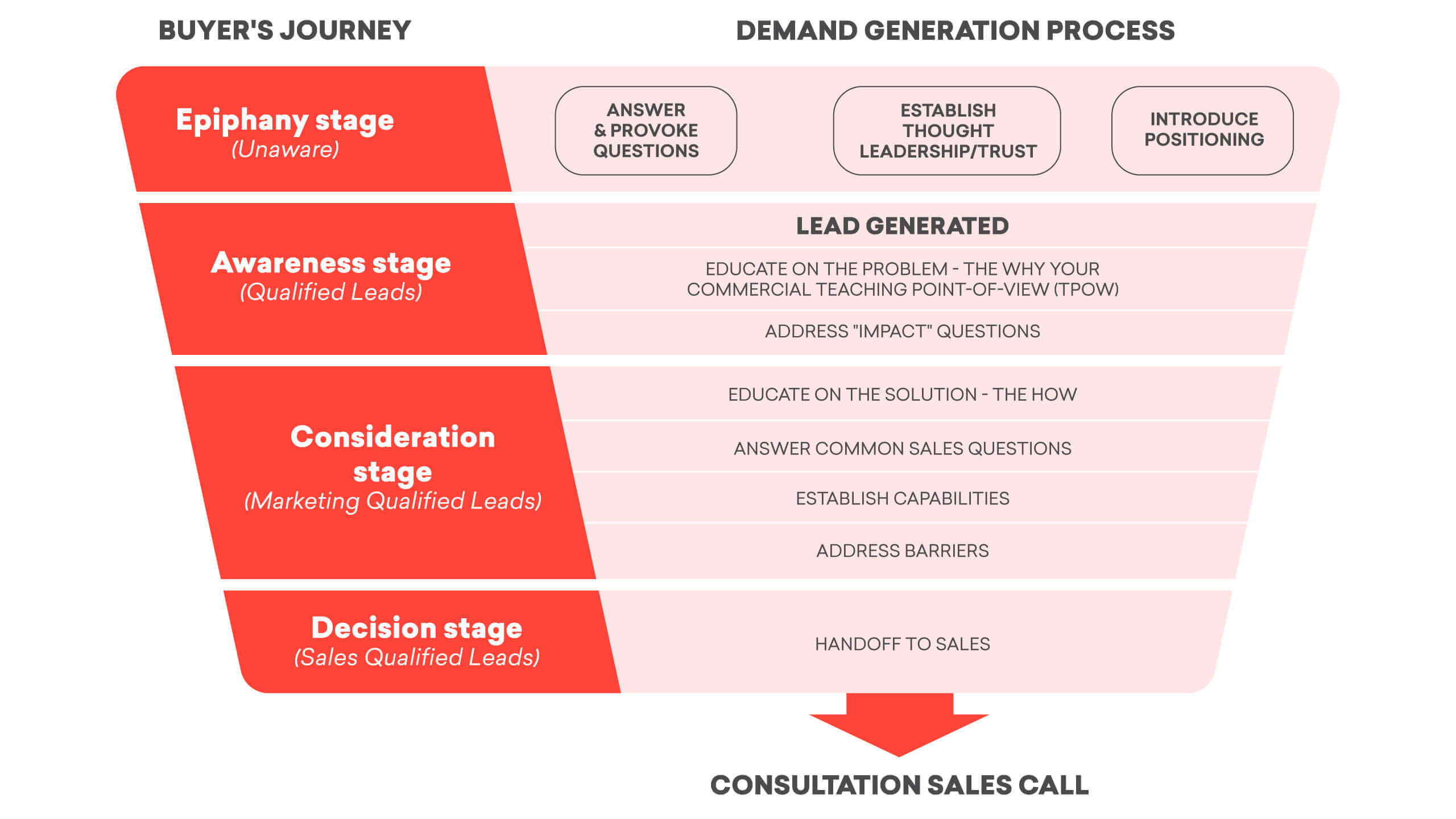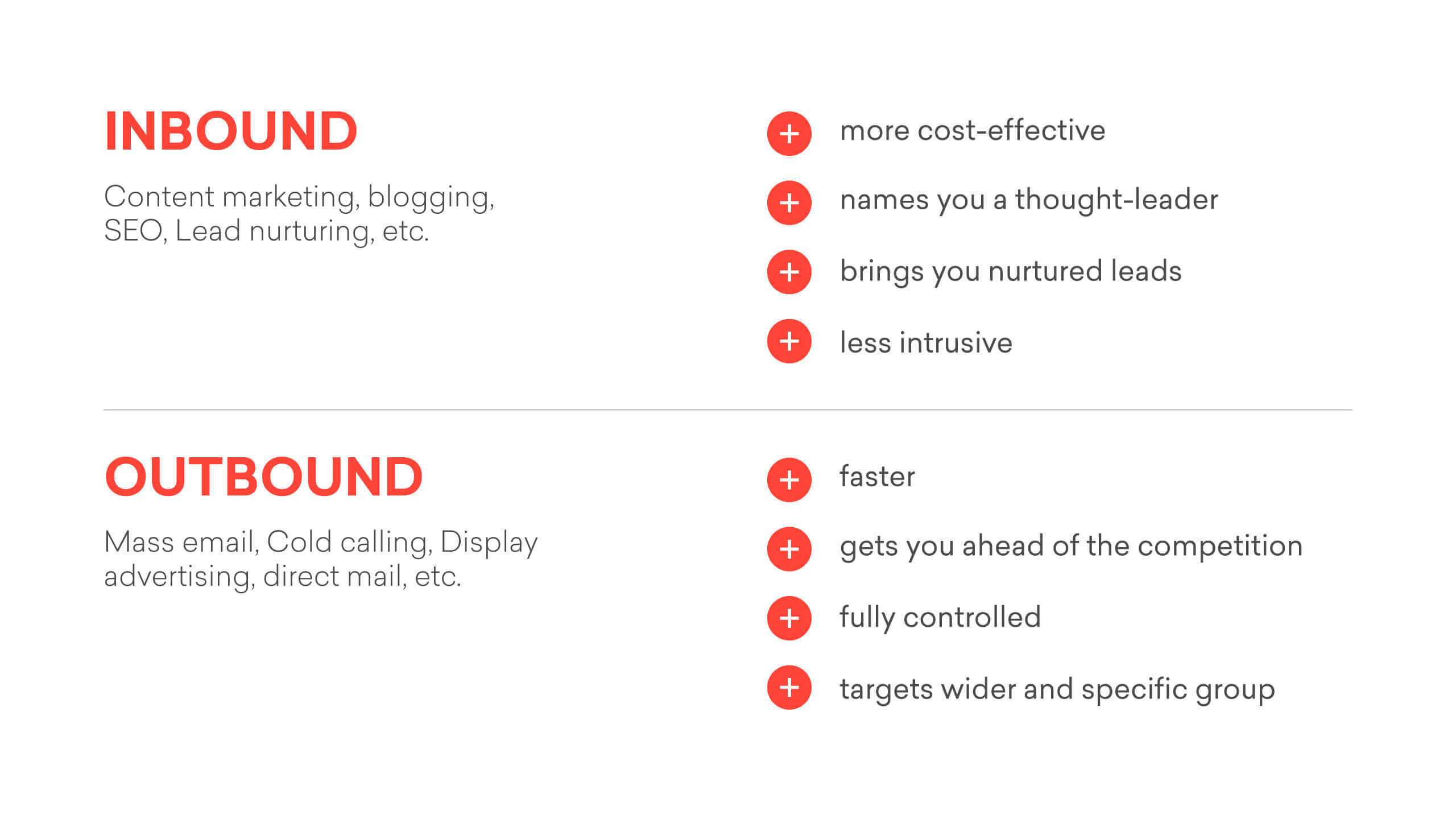
Strategies and tactics for business growth - Demand Generation


If your business isn’t generating a consistent stream of sales-ready leads, it will eventually fail. This makes generating a consistent flow of high-quality leads one of the most important challenges businesses face. In order to create buzz, awareness, and recognition for a product or service, businesses need to generate demand for it. This means having a plan in place to interest potential customers and convert them into leads. In other words, businesses need to focus on demand generation in order to succeed.
If you’re familiar with the term demand generation, you know that choosing the right demand generation tactics and implementing them the right way is essential. That’s why, in this article, we’ll explore some of the most effective demand generation tactics out there. We’ll cover everything from how to develop an effective demand generation strategy to what are four core marketing workstreams for successful B2B demand generation.
By the end of this article, you’ll have a better understanding of how to make the most out of your marketing efforts.
Also, don’t miss to check out our free e-book “Demand Generation: Complete Guide to B2B growth strategy”!
So let’s get started!
The five key components of demand generation strategy
If you want to acquire customers, you need to generate demand. And the best way to do that is through an effective demand generation strategy. An effective demand generation strategy should have several key components in order to be successful.
Each component plays a crucial role in the overall success of the strategy, so it’s important to understand how they all work together to create interest in a product or service and eventually turn that interest into paying customers.
So what are these five key components of demand generation strategy? Let’s take a closer look.
Goals
It is crucial for businesses to have a specific goal in mind so they have a clear and attainable target to aim for. Additionally, setting goals can help businesses track their progress and ensure they are making headway toward increasing profits.
However, setting goals is only half the battle – businesses also need to make sure they have a plan in place to actually achieve them. But if businesses take the time to set ambitious yet achievable goals, it will pay off in the long run.
Audience
“Who is your target audience?” is perhaps the most important question to answer when developing your demand generation strategy. After all, you can’t create an effective strategy if you don’t know who you’re trying to reach.
Creating a demand generation strategy without understanding your target audience is like shooting in the dark. You may eventually hit your target, but it’s going to take a lot longer – and surely cost a lot more.
When determining your target audience, consider factors such as age, gender, location, interests, and even pain points. The more specific you can be about your target audience, the better equipped you’ll be to create content that resonates with them. As a result, you’ll be able to generate more leads – and convert more of those leads into customers.
Content
Once you set goals and have a good understanding of your audience, it’s time to develop a content plan that will attract and engage your target audience. It is essential to align your content with the stages of the buyer’s journey in order to drive leads through the funnel effectively.
Your top-of-the-funnel content should be designed to capture attention and educate your audience about the problems they face. In the middle-of-the-funnel, you can showcase the features and benefits of your product or service to help solve those problems. Finally, you will want to create bottom-of-the-funnel content that is designed to persuade your target audience to take action, such as signing up for a free trial or a demo.

Distribution
When you’re trying to reach a target audience with a message, it’s important to make sure that your strategy is effective. This means getting your message to the right people in the right way and at the right time.
There are a number of ways to distribute content, but some of the most effective include using email marketing, social media, and paid advertising. Each method is effective at a certain point of the buyer’s journey, so you choose it depending on the stage of the funnel. By using the right method for your audience and your message, you can create a successful demand generation strategy.
Measurement
If you want to see how well your marketing campaigns are performing, you need to measure a number of different metrics. This will give you a better understanding of what’s working and what’s not, so you can make necessary adjustments.
Some common metrics to look at include website traffic, number of leads, sales, and customer engagement. While looking at these numbers will give you a good idea of how well your campaign is performing, understanding the story behind your marketing numbers is essential for making informed decisions about your strategy going forward.
Four core marketing workstreams for a successful B2B Demand Generation Strategy
If you want your business-to-business (B2B) demand generation strategy to be successful, you need to make sure you have four key workstreams in place: Brand awareness, Inbound & Outbound marketing, Customer Success, and Revenue Enablement.
Each of these workstreams plays an important role in generating demand and converting prospects into customers. By focusing on all four areas, you can create a well-rounded demand generation strategy that will help you attract and convert more prospects into customers.
Let’s take a closer look at each of these workstreams:
Brand awareness
Creating awareness for your brand should be one of the first steps in your demand generation strategy.
The goal of creating awareness is to get your brand in front of as many people as possible. The more people that are aware of your brand, the greater the chance that they will remember you when they need a product or service that you offer.
You also need to make sure your brand is positioned correctly in the marketplace so that potential customers understand what you offer and why they should choose you over the competition.
There are many ways to get your brand in front of potential customers. But if you want to make a real and lasting impression, consider building a relationship with them through your brand platform, industry thought leadership, social media presence, and PR.
Brand platform
A brand platform is the foundation of the company’s relationship with its customers. It includes the company’s promise, values, positioning, and identity. The brand platform provides direction for all of the company’s marketing efforts and helps to create a coherent brand message.
An effective brand platform should be simple, clear, and easy to communicate. It should be flexible enough to allow for some creativity and innovation in the execution of marketing campaigns, but it should also be consistent enough to maintain a cohesive brand image.
Industry thought leadership
Industry thought leadership is a powerful tool for building brand awareness and generating demand. Your audience will stick around only if they find your content interesting and informative, so it is important to make the content attractive and unique.
By sharing your company’s point of view on key issues and providing valuable insights and perspectives on trends and issues relevant to your industry with your audience, you can position yourself and your company as a trusted resource in your industry, as well as reach a wider audience.
Social media presence
A strong social media presence is crucial for any business that wants to remain relevant to its target audience. Social media branding allows businesses to connect with their customers on a more personal level, which can lead to improved customer engagement.
For example, when customers see your business active on social media, they’ll be more likely to visit your website to learn more about what you have to offer. And once they’re on your website, you have the opportunity to engage with them even further and turn them into loyal customers.
However, simply having a social media presence is not enough – you need to make sure that your social media content is interesting, engaging, and informative if you want to really capture the attention of your target audience.
Public Relations (PR) management
In order for a B2B demand generation strategy to be successful, you need to include public relations (PR) management. PR is a powerful tool that can create awareness for your brand and generate demand for your products and services.
For example, if you were to launch a PR campaign around a new product release or an industry event your company is participating in, this would help to generate excitement and interest in what you have to offer, ultimately leading to more customers.
It’s important to design your PR program in a way that supports your business goals and objectives while also being integrated with your other marketing efforts, such as lead generation and content marketing. This will create a well-rounded strategy that will be more likely to result in success.
Inbound & Outbound Marketing
In order to have an effective demand generation strategy, it is important to align inbound and outbound marketing efforts. Inbound marketing is less intrusive and focuses on getting customers to find and engage with your company online. Outbound marketing, on the other hand, actively reaches out to potential customers through advertising or other forms of direct contact.
In order to be successful, your inbound and outbound marketing efforts need to be aligned in a way that complements each other. By using a mix of both inbound and outbound marketing techniques, you can reach a wider audience and generate more leads.
For example, a company might use outbound marketing to raise awareness of its brand and then use inbound marketing tactics to drive traffic to its website. Once visitors are on the site, they can be converted into leads through forms, calls-to-action, and other conversion strategies.
There are many different marketing tools available to businesses these days, which is amazing news if you’re looking to grow your business. SEO, content marketing, email marketing, lead nurturing strategies, and social media marketing are all great examples of inbound marketing tools that can help you attract new leads and customers. And when it comes to outbound marketing, there are also lots of great options, like pay-per-click advertising, banner ads, pop-up ads, and telemarketing.

Customer success
Customer success is another important piece of the puzzle when it comes to demand generation. So if you’re not already focusing on customer success, now is the time to start.
Ensuring that customers are successful with your product or service is essential to keeping them happy and engaged with your brand. This means providing them with the resources they need to use your product or service effectively and troubleshooting any problems they may have.
Even after a customer buys from you, the work isn’t done—you still need to provide great customer service and look for opportunities to upsell or cross-sell. By keeping your customers happy, you increase the likelihood that they’ll continue doing business with you and recommend you to others.
Revenue Enablement, Intelligence, and Operations
In order to have a successful B2B demand generation strategy, it is essential to have a go-to-market tech stack that incorporates revenue enablement, intelligence, and operations. Let’s briefly go over what each term means:
- Revenue enablement is the process of providing information and resources to sales teams so they can sell more effectively. For example, revenue enablement might involve developing messaging and content that resonates with buyers, providing training on new products and solutions, and establishing processes and tools to help sales reps close more deals.
- Intelligence is the ability to gather and analyze data to make better decisions. In the context of demand generation, intelligence can be used to identify trends and patterns in customer behavior. This information can then be used to tailor marketing campaigns and improve sales strategies. . This can be done through market research, customer surveys, competitive analysis, and other data-driven methods.
- Once you have a solid understanding of your target market and what they want, it’s time to start putting together a plan of attack. This is where operations comes in, as it encompasses all the behind-the-scenes work required to make your lead generation strategy a success. Operations include tasks such as lead management, campaign tracking, and reporting. By streamlining these operations, businesses can improve efficiency and optimize their results.
By integrating these three components – revenue enablement, intelligence, and operations – businesses can more effectively drive leads through the sales pipeline and increase ROI.
Conclusion
We hope this guide was helpful in understanding how to create a successful demand generation strategy. By understanding your target market, crafting compelling messaging, and positioning your brand correctly, you can generate leads that will turn into customers.
Additionally, using workstreams such as brand awareness, inbound marketing, outbound marketing, customer success, and revenue enablement will help ensure your strategy is successful.
One thing is for sure – if you’re not staying ahead of the latest news and trends in your industry, you’re falling behind. Our DeBrief newsletter can help you stay on top of everything, so you can focus on running your business. Plus, if you need help generating more demand for your product or service, check out what we can do for you, and contact us today! Let us help you take your business to the next level.
Related Posts


How to generate leads using marketing automation - 8 ways
We use cookies to personalize and optimize user experience. For more information, visit our Privacy Policy.